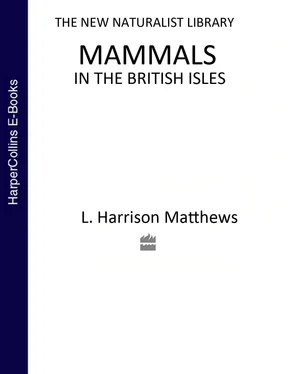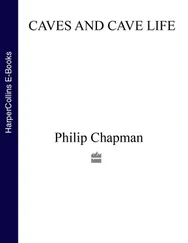The Hoxnian mammalian fauna that moved in from the continent differed from that of the Cromerian, although many species were the same, or similar, such as the beaver, some voles, the wolf, marten, lion, boar, the straight-tusked elephant Palaeoloxodon antiquus , and the red, fallow, and roe deer. New arrivals included the arctic lemming, several voles, the cave bear, two species of rhinoceros replacing Diceros etruscus , Megaceros giganteus replacing several other species of giant deer, and the aurochs. Those that did not return, or were by then extinct, included the vole genus Mimomys , the sabre-tooth, the southern elephant, etruscuan rhinoceros, hippopotamus, zebrine horses, several species of deer, giant deer, and elks, the bison and musk ox.
When the climate became colder with the onset of the Wolstonian glaciation which reached its peak about 140,000 years ago, the fauna became more typically arctic, and those parts of the country not covered with ice were inhabited by hamsters, the arctic, Norway and steppe lemmings, the woolly mammoth, Mammuthus primigeneus , the woolly rhinoceros, Coelodonta antiquitatis , and the reindeer Rangifer tarandus.
At the end of the Wolstonian stage, about 120,000 years ago, the temperate Ipswichian interglacial stage began and lasted about 50,000 years. The climate and flora followed the usual sequence of an interglacial stage, the temperature reaching a peak higher, however, than that of the present day, and the flora progressing from arctic tundra to boreal forest, mixed oak forest and then regressing by similar steps to the onset of the next glaciation. Mammalian remains of the Ipswichian occur in river and lake gravels, muds, and brick earths, and in the deposits of some caves. Many of the mammals are species that form part of our present day fauna, and include the bank, water and field voles, the wood mouse, the red fox, badger, and wild cat, the red, fallow and roe deer; and some extinct only in historic times such as the beaver, wolf, brown bear, wild boar and aurochs. The cooler parts of the stage were also marked by the presence of ground squirrels, the woolly mammoth and the musk ox, whereas the warmer parts supported the spotted hyaena, the lion, the straight-tusked elephant, two kinds of rhinoceros, the giant deer, and the hippopotamus, the last indicating a comparatively high temperature as does the presence of the European pond-tortoise Emys orbicularis. Palaeolithic man, as shown solely by his artifacts, was present throughout the stage.
The following Devensian glaciation began about 70,000 years ago and lasted nearly sixty thousand years until it came to an end rather quickly about 10,000 years ago. It was the least severe of the three great glaciations as it left southern England and the midlands free of ice and thus a possible habitat for many species that can withstand a cold climate. During this stage the sea fell some three hundred feet below its present level so that England was widely connected with the continent over the site of the southern part of the North Sea, and northern Ireland was narrowly connected with southern Scotland. Stuart 136remarks that the vast majority of Pleistocene vertebrate remains found in the British Isles, excluding post-glacial material, is probably of Devensian age. Most of the remains are found in river gravels and caves, some of the later ones in lake sediments. The flora of the ice-free regions was mostly tundra or open grassland, with some patches of boreal forest during short interstadial recessions of glaciation.
The fauna is typical of cold regions, though it includes some species of our present fauna such as the common shrew, the bank, water and field voles, the mountain hare, the fox, stoat, polecat, and red deer. Some of the species are not now associated with severely cold climates but nevertheless can withstand more cold than might be supposed; these are the leopard, lion, and spotted hyaena. On the other hand there are many species typical of colder habitats: a pika Ochotona , ground squirrel, the arctic lemming, several voles including the northern and tundra voles Microtus oeconomus and M. gregalis , the arctic fox Alopex , polar bear, glutton, woolly mammoth which became extinct at the peak of the glaciation about 18,000 years ago, woolly rhinoceros, reindeer, and musk ox. Several other large mammals left abundant remains in gravel and cave deposits; they include the wolf, the brown and cave bears Ursus arctos and U. spelaeus , a sabre-tooth Homotherium , the horse, giant deer, elk, a bison Bison priscus , and the aurochs.
Man returned after the peak of the Devensian glaciation as shown by his artifacts and by a few skeletal remains. 30Some human teeth of middle Devensian age from Picken’s Hole cave in Somerset are the earliest human remains known in the British Isles apart from the Swanscombe skull whose alleged age has been challenged by some people. The largest find of palaeolithic man belongs to the late Devensian deposits of Aveline’s Hole in the Mendip Hills of Somerset, where bones representing thirty-one skeletons were excavated.
As the ice melted during the late glacial stage of the Devensian the climate became milder and reached a peak after about a thousand years in the Allerød interstadial or ‘amelioration’ as it is sometimes called, though amelioration could have a different meaning for a reindeer than for a red deer. Thereafter the climate again became colder until about 10,000 years ago when the ice finally disappeared inaugurating the Flandrian interglacial which has lasted until the present. By the end of the late glacial many of the large mammals had become extinct, although there appears to be no reason why they should not have survived into the Flandrian. Perhaps the change of climate and the resulting changes in vegetation deprived them of their ecological niches, but it is also possible that improved hunting skills of upper palaeolithic man may have overcropped and thus exterminated them. The few species not part of our present mammalian fauna that survived from the late glacial disappeared in the early part of the Flandrian, which is discussed in the next chapter.
CHAPTER 3
THE EVOLUTION OF THE ENVIRONMENT
AT the beginning of the Flandrian stage, when the glaciation started to recede, the climate became warmer and thereafter varied between warmer and cooler so that it is convenient to subdivide the stage according to the prevailing climate of the time. In the first, Preboreal, phase the frost tundra of the country south of the ice began to be covered with growths of the dwarf or arctic birch, a shrub with stems and branches generally spreading over the ground and making a bush only a couple of feet or so high in sheltered places; it is a characteristic plant of the arctic and high mountains. It was followed by the tree birches spreading to make a forest so that in the following Boreal phase, when they were joined by pine and hazel, the forest cover was complete. During the Boreal phase the melting of the ice brought a rapid rise in the level of the sea which finally cut through the Strait of Dover about 7,000 years ago, whereas the southern part of the North Sea and eastern end of the English Channel had been dry at the beginning of the Pre-boreal. At the same time the climate became several degrees warmer than at present, producing the Atlantic phase, during which the forest cover was enriched by the addition of oak, and alder. Thereafter the climate became cooler about 4,500 years ago, introducing the Sub-boreal phase, and the forest was further enriched by ash, elm and lime. A minor rise in sea level marked the end of the Sub-boreal phase about 2,250 years ago, and the climate entered the Sub-atlantic phase that we endure at the present day.
Читать дальше












